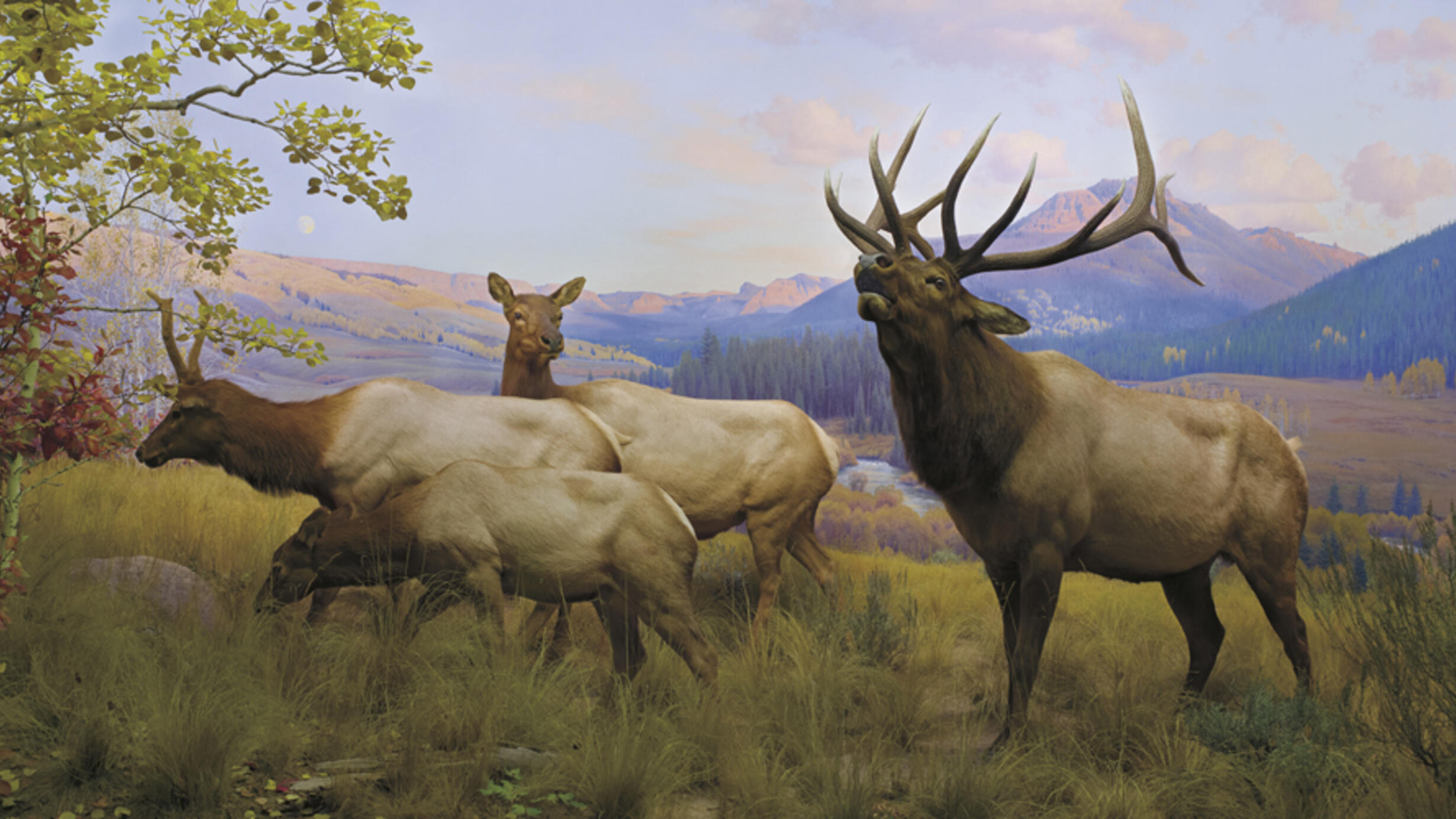Wapiti
Part of Hall of North American Mammals.

Early October at Sunset
By the White River, Colorado
This handsome deer is known by many names. “Wapiti” is one. Wapi means “white” in some native Algonquian languages, which may refer to the deer’s large white rump patch. The species also lives in Eurasia, where it is typically called red deer. The North American version is bigger than the Eurasian one, with a bigger rump patch, too.
This deer is also known as elk in North America. Complicating matters further, “elk” is what Europeans use for moose in their land. As the story goes, early British settlers in North America mistook one deer for the other, even though the resemblance is slim. “Elk” has stuck ever since.
Wapiti and Aspen
Predators Help Them Thrive
As the October sun sets in this Rocky Mountain valley, a few wapiti nibble on chokecherry and quaking aspen. Wapiti are the vacuum cleaners of vegetation. They eat hundreds of species of plants—low, high, tender, tough—as far as they can reach.
This eager appetite can cause problems in places where wapiti lack a natural predator: wolves. Nearby Yellowstone National Park is an example of how top predators can maintain the overall health of an ecosystem.